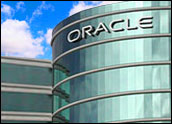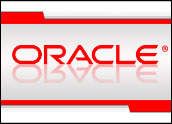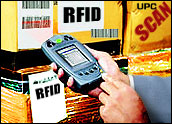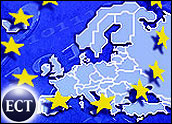
Partitioning of servers in the data centers of its top customers is putting pressure on Oracle, which is making a number of moves to cope with the trend, experts say.
Earlier this month, Oracle changed its licensing terms for users of Sun Microsystems’ Solaris 10.0 operating system, lowering the price for customers who only use Oracle software on part of their server, a business process called “partitioning.”
According to Jonathan Eunice, a researcher with the consultancy Illuminata, the partitioning trend has impaired sales for Oracle, which has historically been a favored application on the Solaris operating system.
Currently, Oracle allows clients who use partitioning software — from Hewlett Packard or IBM — to pay just for the processors they had allocated to run Oracle’s database technology. A client who used eight processors on a 32-processor server would only pay licensing fees for the processors which were used. But those who had Sun Solaris were not part of the deal, and had to pay a licensing fee for all of the processors on the server, which substantially increased costs. The price of US$40,000 per CPU was huge for many clients.
Pricing Policy
Oracle was able to change its pricing policy because of technological innovation at Sun’s Solaris unit. Developers have created a technology that enables database applications running on Solaris partitions — which the company calls “containers” — to use only specified processors, according to Jacqueline Woods, vice president of Oracle.
The earlier version of Solaris, version 9, was made such that Oracle could not determine whether only a limited number of processors were being used to run the software.
Customers who custom-create their own partitions, or those who use VMware’s virtualization software, are out of luck, however. Oracle’s lower-price policy does not apply there, said Woods.
The company has also made some acquisitions to bolster its competitive postion — challenged by the partitioning trend and other trends in database management. According to James Groff, the CEO of TimesTen, a Mountain View, Calif. maker of real-time, in-memory databases, Oracle acquired a growing, profitable firm, in a deal that is expected to close in July. Groff made his remarks during a conference call with financial analysts on June 6th.
The software maker’s product boosts the performance of database-dependent applications by placing real-time databases in memory of the application layer of multi-tiered applications. That means that when talking with back-end databases, like those made by Oracle, or Unix or Microsoft, time to find the data is reduced. Though many database applications can churn through a lot of data, they cannot be said to perform this quickly, experts noted. When they aggregate hundreds of gigabytes of information — for telephone networks, military applications, and other applications — only two to five gigabytes are actually needed for each application.
The company said that Oracle has never before created a product to perform this kind of data caching, though it does already share many of the 1,500 customers that TimesTen has cultivated. Once the acquisition is complete, Oracle plans to integrate the software into its applications, and bolster its distributed computing capabilities, improving the performance of the technology. “Milliseconds matter,” said Groff, during the conference call.
Competitive Assessment
Oracle competitors agreed that the acquisition was a savvy move. “This acquisition proves that to be a player in the real-time management space you have to have both in-memory and on-disk data management capabilities,” said Alain Couder, president and chief executive officer of Solid Information Technology, based in Cupertino, Calif.
“Oracle had to go out and buy the in-memory part, and now they need to figure out how to integrate the technology into their systems.”
These real-time databases — increasingly in demand from customers — are different than generic relational databases, and exhibit a “complexity,” said Susan Eustis, president of Winter Green Research, an IT consultancy. Data has to be made as quickly available as a telephone dial tone to satisfy customers, she said.



















































